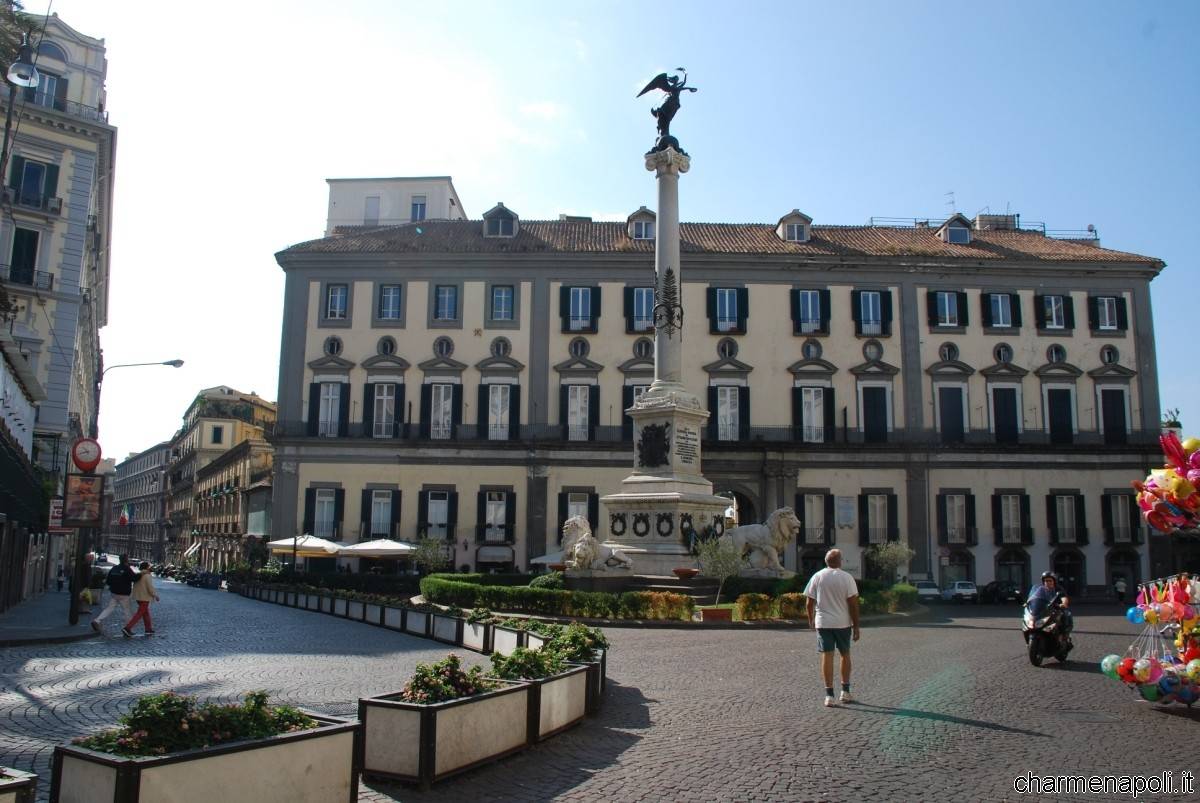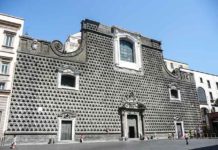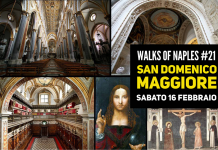In piazza Trieste e Trento, few steps from Teatro San Carlo, unwinds another famous street of the “struscio”: via Chiaja, not far from what used to be the “playa” (beach) during Spanish domination.
Via Chiaja, built following the bed of a river flowing at the foot of Mount Echia during Greek-Roman period, starts right in front of Palazzo Reale, next to Gran Caffè Gambrinus, renowned meeting point of artists, and ends in piazza dei Martiri.
Via Chiaja runs along authentic pieces of Neapolitan history: pizzeria Brandi, where, in June 1889, pizza Margherita was created in honour of the queen of the Savoy house, Sant’Orsola Church, Santa Caterina Church, Palazzo Cellammare, Teatro Sannazzaro, and the Chiaja Bridge, a Neo-Classic structure with marble decorations and a wide arc, built in 1636 to connect Pizzofalcone with Quartieri Spagnoli. This street offers endless shopping opportunities, like piazza dei Martiri. It can also be reached from via Calabritto or via Filangieri, immediately to the right of palazzo Cellammare.
[charme-gallery]
In via Calabritto have their shops the most exclusive fashion houses and jewellers of Naples. It is named after a monumental palace where, during the centuries, many illustrious people have lived, one for all Gioacchino Murat.
Via Filangieri, with via Vittoria Colonna and via dei Mille (so called in honour of Garibaldi’s expedition), is full of luxury shops, fashion boutiques, elegant and modern palaces.
Via dei Mille and via Filangieri were built between the end of ’800 and the beginning of ’900, together with several Liberty style buildings, like palazzo Mannajuolo and palazzo Leonetti, houses, respectively, of the British and Spanish consulates. There stands palazzo Carafa di Roccella, hosting the modern art museum Pan.
[charme-gallery]
From via dei Mille branches off via San Pasquale. Going higher, via dei Mille changes its name in via Vittoria Colonna, with the Church of Santa Teresa a Chiaja, famous for its panoramic stairs, and the palace where the playwright Edoardo Scarpetta lived. At the end of the street there are the majestic Piazza Amedeo and via del Parco Margherita, where the first Funicolare station was built. (Translated by Claudia Romagnuolo)

 Italiano
Italiano














